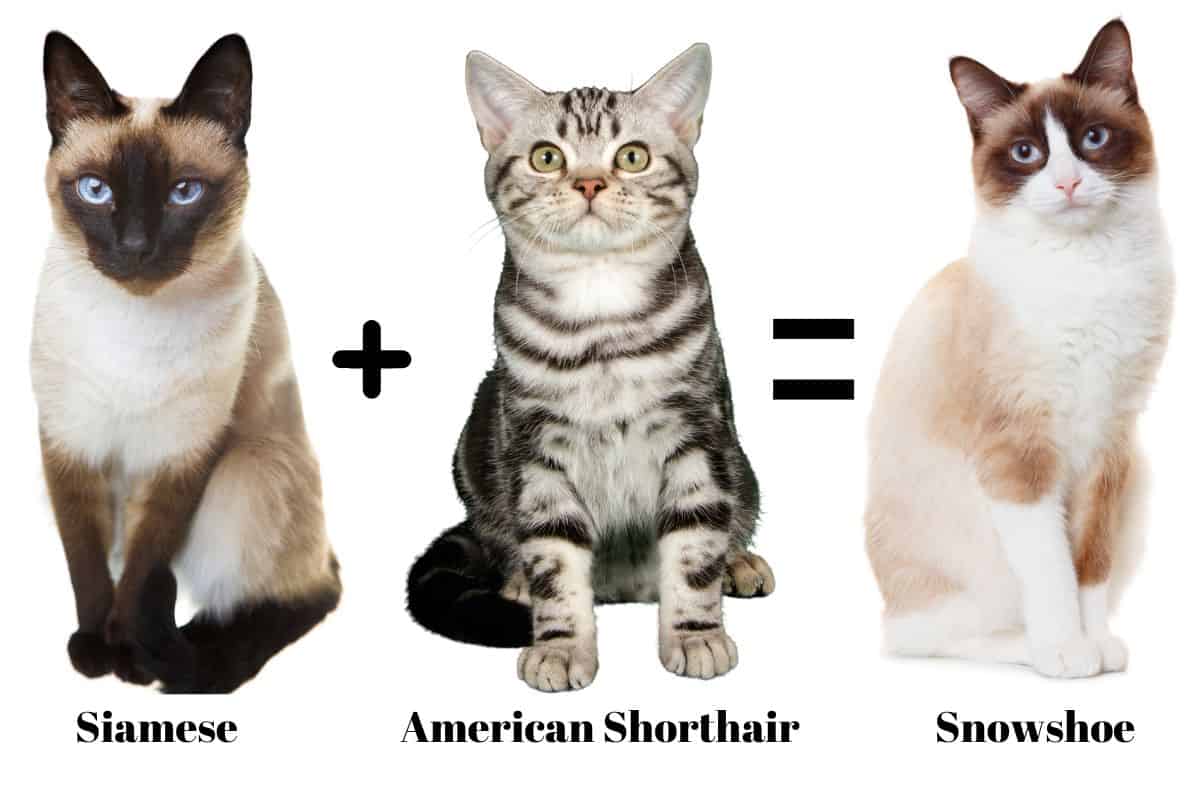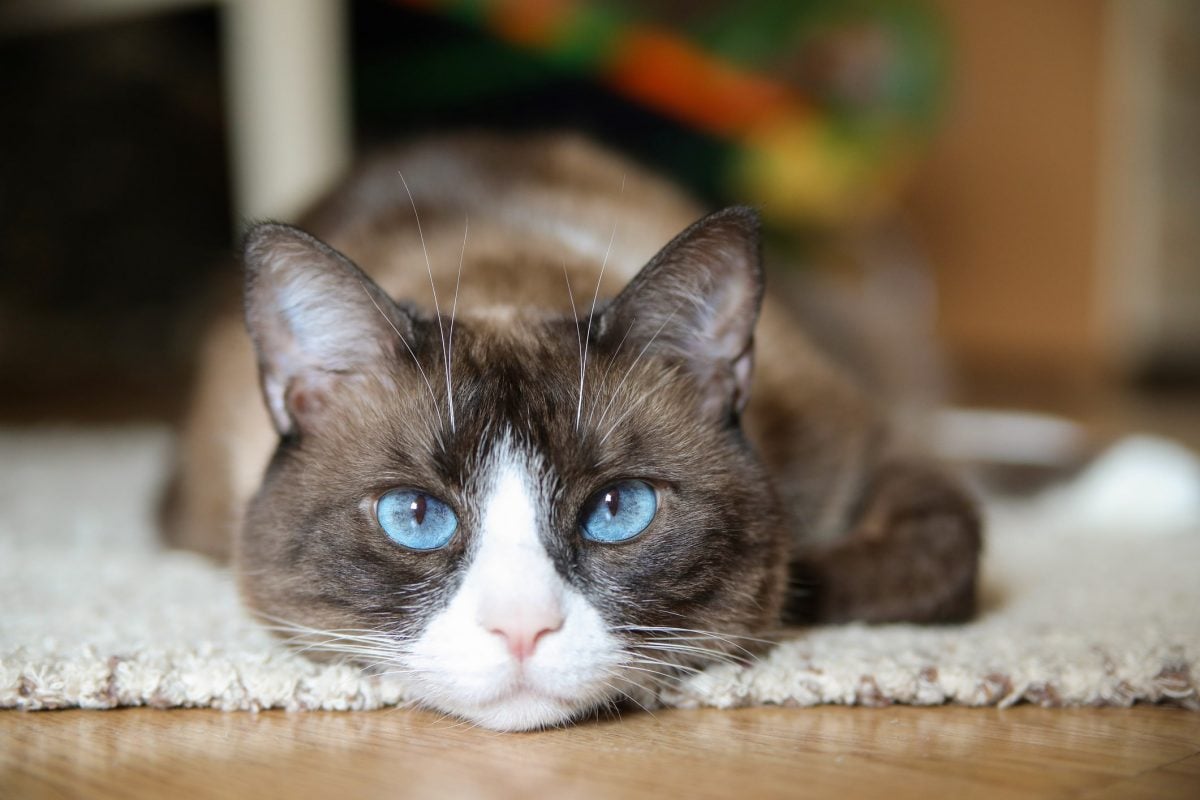Introduction
The snowshoe cat breed is a relatively recent offspring of Siamese and American shorthair breeds. The snowshoe cat gets its name from its dazzling white paws. Both its temperament and its other colorpoint markings are comparable to that of a Siamese. This medium-sized purred kitty is full of life and love, and it would make a wonderful addition to any home.
The Snowshoe cat, like many other breeds with significant Siamese ancestry, is a very social creature that suffers greatly when abandoned for lengthy periods of time. These cats can become destructive if they are bored, exhibiting destructive activities and making annoying noises.
Snowshoe cats, happily, get along great with other types of felines. Having a second cat can help alleviate the negative effects of isolation, such as destructive behavior if you and your family are unable to be together all the time.
History of Snowshoe Cat Breed
Beginning in the 1960s, the United States became the birthplace of the Snowshoe cat breed. Dorothy Hinds-Daugherty, a Siamese breeder, is credited with creating the breed.
She aimed to establish a new cat breed with unique markings. To do this, Hinds-Daugherty bred a Siamese and an American Shorthair cat, creating kittens with unusual coat patterns and colors. She kept breeding these cats until she had a distinct breed with a stable appearance and personality.
The International Cat Association (TICA) approved the Snowshoe cat breed in 1982, and since then, it has gained widespread popularity among cat owners. Snowshoe cats have gained a lot of attention, but they are still not as common as other types of cats.
To keep the breed’s distinctive appearance and sociable demeanor, breeders must be selective when choosing breeding couples. That’s why it’s important to keep in mind that Snowshoe cats are still a rare breed.

Physical Traits of Snowshoe Cat Breed
The snowshoe cat is a kind of cat that is medium-sized and very athletic. Their short, close-fitting coat is silky smooth and comes in a broad variety of colors, ranging from blue and lilac to chocolate and seal. It lies rather close to the body.
One of the most distinguishing features of Snowshoe cats is the white coloration of their paw pads, which has led some people to compare them to snowshoes. The white spots cover the entire length of the legs, and they can also be seen on the chest and abdomen at various intervals. There is a striking contrast between the white fur on the head and the darker coloring on the rest of the body, which often resembles the pattern of a Siamese cat.
Snowshoe cats have enormous, pointed ears that are positioned at right angles to the rest of their skulls. This gives their heads the appearance of a wedge that has been straightened. Its coat color determines whether or not the almond-shaped eyes on its face are blue or green in coloration.
In comparison to cats of other breeds, Snowshoe cats stand out from the crowd thanks to their one-of-a-kind and refined appearance. Because of their outgoing and affectionate demeanor, they make wonderful pets; in addition, their distinguishing markings and magnificent coats make them a popular option for people who are interested in cats.
Temperament Evaluation of Snowshoe Cat Breed
The Snowshoe cat is a popular breed due to its warm personality, affectionate nature, and sharp mind. These felines require a lot of engagement with their owners because they are highly social animals. Often friendly and active, snowshoe cats appreciate puzzle toys and other mental and physical challenges. Cats of this breed are exceptionally bright and may be taught to perform tricks or play fetch. Some owners claim their cats talk to them through meows and other noises, and this is a trait that has earned them a reputation for being talkative.
Despite their mischievous attitude, Snowshoe cats are known for being loving companions. They often develop close relationships with their owners, even to the point of sitting on their laps or following them around the house. The snowshoe cat is a highly adaptable species that can thrive in a variety of environments. They tend to get along well with both children and other pets, though introductions may be necessary.
The Snowshoe cat makes a great pet for anyone who wants a smart, social, and affectionate feline in their lives. Indoor cats benefit greatly from the presence of these active, friendly, and devoted felines.

Snowshoe Cat Breed’s General Health
Snowshoes can live 20 years with proper care. They can still catch certain infections. Snowshoe cats often have back pain, gastrointestinal troubles, diarrhea, dental concerns, and respiratory issues. Cardiac hypertrophy (HCM), might be genetic or related to another disease. Overactive thyroid glands cause cardiac muscle thickening. Heart disease needs early detection. Rapid breathing, tiredness, and low appetite are the early symptoms. Advanced imaging is needed to diagnose a cardiac murmur, which is frequently present.
HCM cannot be cured, however, drugs can delay its progression. Feline lower urinary tract disease may lead your cat to urinate outside the litter box (FLUTD). FLUTD cats may also experience pain, straining, or blood in their urine. Male cats’ constricted urethras make this condition deadly. If your cat exhibits FLUTD symptoms, get medical attention immediately.
Cats, like people, can develop renal failure. Kidney failure causes this. Renal failure generally affects older cats, but it can also impact kittens especially if their parents had kidney issues. Hence, you should frequently evaluate your Snowshoe for renal failure, especially if it has inherited kidney problems.
Cat allergies differ from human allergies. Cats have itchy skin, not sneezing or irritated eyes. Legs, stomach, cheeks, and ears are commonly affected. Allergies may cause excessive licking or frequent ear infections in cats.
Conclusion
The sociable and outgoing nature of the Snowshoe cat breed makes it a good fit for households with both canine and feline companions. They will, of course, do everything it takes to grab your attention since they adore having individual cuddling sessions with their people, and they will do whatever it takes to get your attention. Also, the Snowshoe behaves well in homes with children; although, supervision is likely to be required when smaller children are around to ensure that they treat the animal with the appropriate level of respect. The fact that this breed gets along well with both children and other animals makes it an excellent choice for families of any size or configuration.
hey we have a lot of information on cats you can check out by clicking Bristhorthair.com
wants to follow us on social media
How long do snowshoe cats typically live?
On average, a Snowshoe will live for roughly twelve years.
Do Snowshoe Cats like being in Water?
Snowshoe is an unusual feline in that she enjoys being in the water. They are so independent that they will even go swimming if it is their idea.

